ECS1601 Macroeconomics Question BANK Second 6 PDF

| Title | ECS1601 Macroeconomics Question BANK Second 6 |
|---|---|
| Course | Macroeconomics |
| Institution | University of South Africa |
| Pages | 18 |
| File Size | 438.6 KB |
| File Type | |
| Total Downloads | 331 |
| Total Views | 361 |
Summary
ECS1601 TEST BANKAdditional Theory QuestionsQuestion 157Which of the following statements are correct?a) To combat unemployment steps must be taken to stimulate the demand for labour. (correct) b) Stricter immigration control could help to combat the unemployment problem in South Africa. (correct) c...
Description
ECS1601 TEST BANK Additional Theory Questions Question 157 Which of the following statements are correct? a) To combat unemployment steps must be taken to stimulate the demand for labour. (correct) b) Stricter immigration control could help to combat the unemployment problem in South Africa. (correct) c) Efforts to increase the demand for exports do not influence the domestic demand for labour. (incorrect) Question 158 Use the figure below which shows the trade-off between inflation and unemployment, to answer question 158
A movement from point a to b might be caused by 1) a decrease in aggregate supply. 2) an increase in aggregate supply. 3) a decrease in aggregate demand. (correct) 4) an increase in aggregate demand. Question 159 Which of the following statements are correct? a) Real GDP is obtained by adjusting nominal GDP for inflation. (correct) b) GDP per capita is calculated by dividing GDP by the number of people in the population. (correct) c) In measuring economic growth, the production or income should be expressed in nominal terms. Question 159 Which one of the following factors could cause an expansion in production capacity? 1) domestic demand. 2) export demand. 3) import substitution. 4) capital deepening. (correct) Question 160 Which of the following statements are correct about the three major flows in the economy? a) The circular flow of production, income and spending is a continuous process. (correct) b) Spending generates income. (correct) c) Production creates income. (correct)
Question 161
A complete business cycle is represented by movement from 1) A to B. 2) B to C. 3) A to C. (correct) Question 162 Which one of the following statements explains the difference between stocks and flows? 1) Stocks have a time dimension and flows are measured at a point in time. 2) There is no clear difference between stocks and flows. 3) Flows have a time dimension and stocks are measured at a point in time. (correct) Question 163 Which of the following statements are correct? a) The factor market is where capital goods and labour are bought and sold. (correct) b) Households are engaged primarily in production. c) Investment is the act of purchasing capital goods. (correct) Question 164 In a circular flow of income and spending a) the flow of income is in the same direction as the flow of spending. (incorrect) b) the firms' spending represents the expenditure of the households. (incorrect) c) the firms supply goods in the factor market and households buy these goods in the goods market. (incorrect) Question 165 Given the government in the circular flow of income and spending, which of the following is a withdrawal? a) Income taxes. (correct) b) Government expenditure. c) Transfer payments. Question 166 Which of the following statements are correct? d) South Africa has an open economy as the volume of the country's imports exceed the volume of exports. (incorrect) e) Imports constitute a leakage while exports constitute a withdrawal from the circular flow of income and spending. (incorrect)
f) Payment for exports constitutes an addition and payment for imports constitutes an injection into the circular flow of income and spending. (incorrect) Question 167 Which of the following statements are correct? a) Financial institution acts as intermediary between those who save and those who wish to invest. (correct) b) Financial sector is the funnel through which saving is channelled back into the circular flow in the form of investment. (correct) c) Investment is the most important form of saving in the circular flow of income and spending. Question 168 Total spending in the economy consists of spending by a) firms and households. (correct) b) government and foreign sector. (correct) c) government and financial sector. Question 169 The three important injections into the circular flow of income and spending are 1) investment spending, government spending and imports. 2) exports, taxes and savings. 3) exports, investment and government spending. (correct) 4) savings, import and consumption. Question 170 When economists say that money is a store of value they imply that 1) money has a greater value than other assets. 2) the value of money is not affected by inflation. 3) money can be used to measure the value of other commodities. 4) money is a way of saving purchasing power to be used when needed. (correct) Question 171 If product prices in South Africa were stated in terms of litres of milk (instead of rands and cents), then milk would be functioning primarily as 1) a store of value. 2) a unit of account. (correct) 3) a medium of exchange. Question 172 Which of the following statements are correct about money? a) Credit cards are a form of money because they can be used to make purchases. b) Demand deposits are immediately available as a medium of exchange. (correct) c) M3 relates to the function of money as a store of value. (correct) Question 173 Which of the following statements are correct? a) Banks can create demand deposits by granting credit to their clients in the form of overdraft facilities. (correct) b) When a person deposits cash in a cheque account there is no immediate change in the quantity of money. (correct)
c) When the cash reserve requirement increases, the credit multiplier increases. Question 174 When the entire banking system makes use of excess reserves to grant new loans in the form of deposits, 1) the credit multiplier decreases. 2) the credit multiplier increases. 3) the credit multiplier remains unchanged. (correct) Question 175 The South African Reserve Bank 1) is responsible for the implementation of fiscal policy. 2) is lender of last resort for those consumers who are unable to secure a loan from commercial banks. 3) is co-responsible for tax collection. 4) is responsible for the formulation of monetary policy. (correct) Question 176 Which one of the following regarding the demand for money is correct? 1) The speculative demand for money is a function of the income level and the interest rate. 2) The transactions demand for money is inversely related to the interest rate. 3) The position of the money demand curve is determined by the income level. (correct) 4) An increase in interest rate will result in a decrease in the precautionary demand for money. Question 177 The quantity of money demanded for precautionary purposes decreases if 1) total output decreases. (correct) 2) consumer incomes increase. 3) the interest rate increases. 4) the inflation rate increases. Question 178 The South African Reserve Bank feels that the South African economy is overheated. To correct the problem the SARB could 1) sell bonds on the open market. (correct) 2) increase tax rates. 3) decrease government spending. 4) lower the reserve requirement. Question 179 Which of the following statements regarding financing of government expenditure are correct? a) The budget deficit is positively related to the interest on public debt. b) The government can finance its deficit by buying bonds from the public. c) Inflationary financing occurs when government borrows from the central bank. (correct) Question 180 According to Say’s law a) spending can be insufficient to achieve full employment. b) all leakages automatically find their way back into the circular flow of income and spending. (correct) c) total spending will always be equal to total income. (correct)
Question 181
The shift in the investment function from I0 to I1 is as a result of a) an increase in repo rate. b) a decline in lending rate. c) an improvement in profit expectations. (correct) Question 182 Using the above diagram, a movement from point b to a is due to a) an increase in interest rate. (correct) b) an increase in investment spending. c) an increase in income. Question 183 Which of the following statements are correct regarding the multiplier? a) The multiplier is the ratio between the change in income and the change in autonomous total spending. (correct) b) The size of the multiplier depends on the marginal propensity to consume. (correct) c) The greater the multiplier the greater the marginal propensity to consume. Question 184 A decrease in leakages from the circular flow of income and spending leads to _________ in the multiplier. 1) a decrease 2) no change 3) an increase (correct) Question 185 What does the assumption of exogenous interest rates in the Keynesian models mean? 1) Interest rates are ignored. 2) The model cannot explain changes in interest rates. (correct) 3) Interest rates explain total income which in turn is explained by the model. 4) Interest rates are dependent on changes in the model and it is determined by investment. Question 186 The introduction of government spending a) increases the level of aggregate spending. (correct) b) decreases the multiplier. c) decreases the equilibrium level of income.
Question 187 According to the assumptions of the simple Keynesian model, the economy only consists of the two sectors; households and firms. There is ______________ relationship between government spending and total income. 1) a positive 2) no systematic (correct) 3) a negative Question 188 Which of the following statements are correct about the Keynesian model including the government? a) Government spending is largely financed by taxes and taxes are thus an injection into the circular flow of income and spending. (incorrect) b) Disposable income is simply the income that households have available after they have saved. (incorrect) c) The introduction of a proportional income tax increases the size of the multiplier. (incorrect) Question 189 The introduction of a proportional income tax is shown by 1) an upward shift of the aggregate spending curve. 2) a downward shift of the consumption function. 3) a downward swivel of the consumption function. (correct) 4) an upward swivel of the aggregate spending curve. Question 190 The objective of price stability means 1) there should not be price increases in the economy. 2) keeping inflation as low as possible. 3) prices should always stay constant. (correct) 4) prices should be determined by forces of demand and supply. Question 191 In the national accounts, the difference between gross investment and net investment is 1) imports. 2) capital flight. 3) income earned by foreigners. 4) depreciation. (correct) Question 192 If the CPI was 120 in 1994, the typical basket of goods and services 1) in 1994 was 20 percent more expensive than in the previous year. 2) in 1994 was 120 percent more expensive than in the base year. 3) in the base year was 120 percent more expensive than in 1994. 4) in 1994 was 20 percent more expensive than in the base year. (correct) Question 193 If the unemployment rate is 6 percent, it means that 6 percent of 1) the population is not working. 2) the labour force is not working. 3) the individuals who are looking for work cannot find jobs. (correct) 4) the people do not want to work.
Question 194 Which of the following statements are incorrect? a) In the simple Keynesian model, consumption spending can never exceed income. (correct) b) In the simple Keynesian model, income is represented by the symbol Y and production by the symbol A. (correct) c) According to Keynes, aggregate demand in the economy can never be insufficient. (correct) Question 195 In the Keynesian model, the assumption that prices are fixed implies that 1) we cannot use the model to study the labour market. 2) the model can be used to study inflation. 3) the model is ideal for studying the money market. 4) we cannot use the model to study the general increase in price levels. (correct) Question 196 Which one of the following statements is true about the consumption function C = 10 + 0,8Y? 1) Autonomous consumption spending refers to the part of consumption spending which varies with income. 2) The autonomous consumption is 10,8. 3) The marginal propensity to save is 0,2. (correct) 4) Induced consumption is equal to Y. Question 197 A decrease in the marginal propensity to consume 1) does not affect the value of the multiplier. 2) will not occur because the marginal propensity to consume is set by government. 3) raises the value of the multiplier. 4) lowers the value of the multiplier. (correct) 5) decreases the marginal propensity to save. Question 198 When government spending increases, the income of some people increases and those people in turn spend some of the increase in income. This is an example of 1) supply side economics. 2) demand and supply economics. 3) the multiplier effect. (correct) 4) the law of demand. Question 199 In the simple Keynesian model, the following is true about investment. 1) As income increases, investment also increases. 2) There is a negative relationship between investment and income. 3) Investment is autonomous and is illustrated by a horizontal line. (correct) 4) Investment is positively related to the interest rate. Question 200
Question 201 Which of the following statements are correct? a) The 45 degree line shows the equality between the variable measured on the vertical axis and the variable measured on the horizontal axis. (correct) b) At any point above the 45 degree line there is excess supply of goods and services. c) When aggregate spending is greater than total production, firms experience an unplanned increase in their inventories and respond by lowering their production. Question 202 The multiplier effect 1) is a theory explaining how consumers save in order to cater for the future. 2) is a way of explaining the relationship between a change in investment and a change in output. (correct) 3) is shown by the disproportionately larger change in aggregate demand as result of a change in autonomous spending. (correct) 4) is an example expansionary monetary policy 5) is an example of contractionary fiscal policy Question 203 The value of the multiplier is necessarily increased if 1) the marginal propensity to consume increases and the marginal propensity to import falls. (correct) 2) the marginal propensity to consume falls and the tax rate falls. 3) the marginal propensity to consume and the marginal propensity to import rise. 4) the income tax rate falls and the marginal propensity to import rises. Question 204 Given the import function Z = 300 + 2/3Y, which of the following statements are incorrect? a) The marginal propensity to save is 1/3. (incorrect) b) The induced component is 300. (incorrect) c) 2/3 is the proportion of any increase in income that is spent on imports. (correct) Question 205 Which of the following correctly lists the assumptions of the AD-AS model? a) Prices are given, wages are variable. b) Prices are variable, wages are variable. (correct) c) Money supply is given. d) The interest rate is variable. (correct) Question 206 The aggregate demand and aggregate supply model explains 1) short run fluctuations in real GDP and price level. (correct) 2) equilibrium between aggregate demand and aggregate supply. (correct) 3) the sources of short run growth versus long term growth. 4) long run fluctuations in output, employment and prices.
Question 207 If the economy is at a certain point on the aggregate supply curve, a decrease in aggregate demand will 1) permanently increase unemployment. 2) temporarily increase unemployment. (correct) 3) permanently increase inflation. 4) temporarily increase inflation. Question 208 An expansionary monetary policy is less effective if 1) the interest elasticity of investment demand is smaller and the AS curve is flatter. 2) the interest elasticity of investment demand is bigger and the AS curve is steeper. 3) the interest elasticity of investment demand is smaller and the AS curve is steeper. (correct) 4) the interest elasticity of investment demand is bigger and the AS curve is flatter Question 209 A simultaneous decrease in aggregate supply and an increase in aggregate demand will always 1) increase the production level. 2) reduce the production level. 3) increase the price level. (correct) 4) leave the price level unchanged. Question 210 Which of the following is the most widely used measure of inflation? 1) The consumer price index (correct) 2) The producer price index 3) The prime rate 4) The repo rate Question 211 Suppose in the South African economy, the annual rate of inflation decreases from 10% to 8% to 3% between 2000 and 2003, the South African economy is experiencing 1) stagflation. 2) disinflation. (correct) 3) deflation. 4) accelerating deflation.
Question 212 Demand pull inflation is the result of a) an increase in consumption spending. (correct) b) an increase in investment spending. (correct) c) an increase in government spending. (correct) d) an increase in export earnings. (correct) Question 213 Cost push inflation is caused by a) increases in wages and salaries and investment spending. b) increased profit margins, decreased productivity and natural disasters. (correct) c) increases in the cost of imported capital and intermediate goods and increases in wages and salaries. (correct) d) decreased investment spending and increased profit margins.
Question 214 Stagflation refers to 1) an increase in inflation and a decrease in unemployment. 2) a decrease in inflation and an increase in unemployment. 3) an increase in the general price level and a decrease in output levels. (correct) 4) decrease in the general price level and an increase in the level of output Question 215 Unemployment a) includes those who are willing and able to work, but cannot find jobs. (correct) b) is measured as a proportion of total population. c) is measured as a proportion of labour force. (correct) d) is a flow concept. Question 216 Economic growth is measured by a positive change in which of the following? 1) The money supply. 2) The producer price index. 3) The gross domestic product. (correct) 4) The balance of payments. Question 217 Economic growth can best be described as 1) an avoidance of a negative output gap. 2) an increase in aggregate demand which causes a movement along the short run aggregate supply curve. 3) continuous outward shifts of aggregate demand. (correct) 4) a long term expansion of a country’s potential GDP. (correct) Question 218 Which one of the following approaches can be used to increase economic growth? 1) Increase the income tax rate. 2) Increase investments in consumer goods. 3) Increase imports. 4) Increase investments in capital goods. (correct) Question 219 In the last year, the global economy experienced a recession. In this case, which kind of economic policy measure is the appropriate measure for affected governments to undertake? 1) Expansionary fiscal policy. (correct) 2) Contractionary fiscal policy. 3) Contractionary monetary policy. 4) Expansionary monetary policy. Question 220 In the fiscal year 2011/2012, South Africa’s budget deficit stood at 5.3 percent of GDP. The budget deficit tends to decrease when 1) there is an increase in GDP. (correct) 2) there is an accelerated decrease in GDP. 3) there is a slight decrease in GDP. 4) GDP remains unchanged.
Question 221 Assume that the South African government is running a deficit, it pays for most of its extra spending by 1) printing extra money at the Reserve Bank. 2) selling bonds and treasury notes. (correct) 3) selling public property. 4) borrowing from itself. Question 222 The notion that countries stand to gain more if they trade in the commodity of their lowest opportunity cost is referred to as 1) international trade. 2) comparative advantage. (correct) 3) absolute advantage. 4) equal advantage. Question 223 Assume, for simplicity, that South Africa and Botswana both produce 1 computer and 5 tonnes of shoes, then 1) Botswana will have an absolute advantage in the production of shoes. 2) South Africa has a comparative advantage over Botswana in the production of both computers and shoes. 3) there is no basis for trade since there is equal advantage in the production of both products in both countries. (correct) 4) South Africa has an absolute advantage in the production of both computers and shoes since it has a bigger market. Question 224 If the rand appreciates against other currencies in the exchange rate market, this will 1) have no effect on the South African current account. 2) worsen t...
Similar Free PDFs

Chapter 6 - Question Bank
- 28 Pages

Dmdw-question bank - question bank
- 17 Pages

Question bank
- 8 Pages
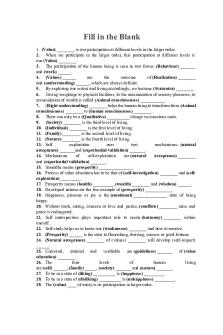
Question Bank 3question bank
- 6 Pages

Question BANK
- 19 Pages

Question Bank 4 & 6 MATH 3510
- 5 Pages

Macroeconomics chapter 6 vocab
- 1 Pages
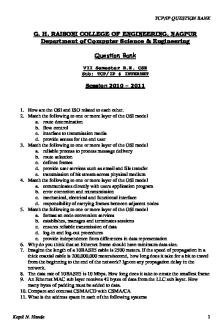
Tcp-ip-question-bank
- 25 Pages

Chapter 4 - Question Bank
- 28 Pages

DIP Question Bank Sheetal
- 14 Pages
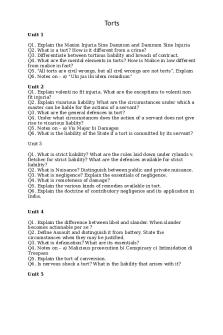
Torts Question Bank
- 2 Pages
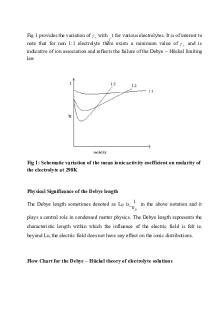
QB5 - Question Bank 5
- 104 Pages

Assessment Question Bank 1
- 22 Pages
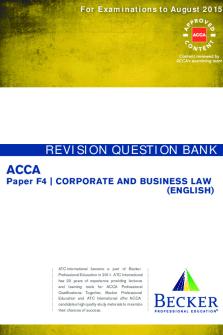
Revision Question Bank 60
- 154 Pages
Popular Institutions
- Tinajero National High School - Annex
- Politeknik Caltex Riau
- Yokohama City University
- SGT University
- University of Al-Qadisiyah
- Divine Word College of Vigan
- Techniek College Rotterdam
- Universidade de Santiago
- Universiti Teknologi MARA Cawangan Johor Kampus Pasir Gudang
- Poltekkes Kemenkes Yogyakarta
- Baguio City National High School
- Colegio san marcos
- preparatoria uno
- Centro de Bachillerato Tecnológico Industrial y de Servicios No. 107
- Dalian Maritime University
- Quang Trung Secondary School
- Colegio Tecnológico en Informática
- Corporación Regional de Educación Superior
- Grupo CEDVA
- Dar Al Uloom University
- Centro de Estudios Preuniversitarios de la Universidad Nacional de Ingeniería
- 上智大学
- Aakash International School, Nuna Majara
- San Felipe Neri Catholic School
- Kang Chiao International School - New Taipei City
- Misamis Occidental National High School
- Institución Educativa Escuela Normal Juan Ladrilleros
- Kolehiyo ng Pantukan
- Batanes State College
- Instituto Continental
- Sekolah Menengah Kejuruan Kesehatan Kaltara (Tarakan)
- Colegio de La Inmaculada Concepcion - Cebu

